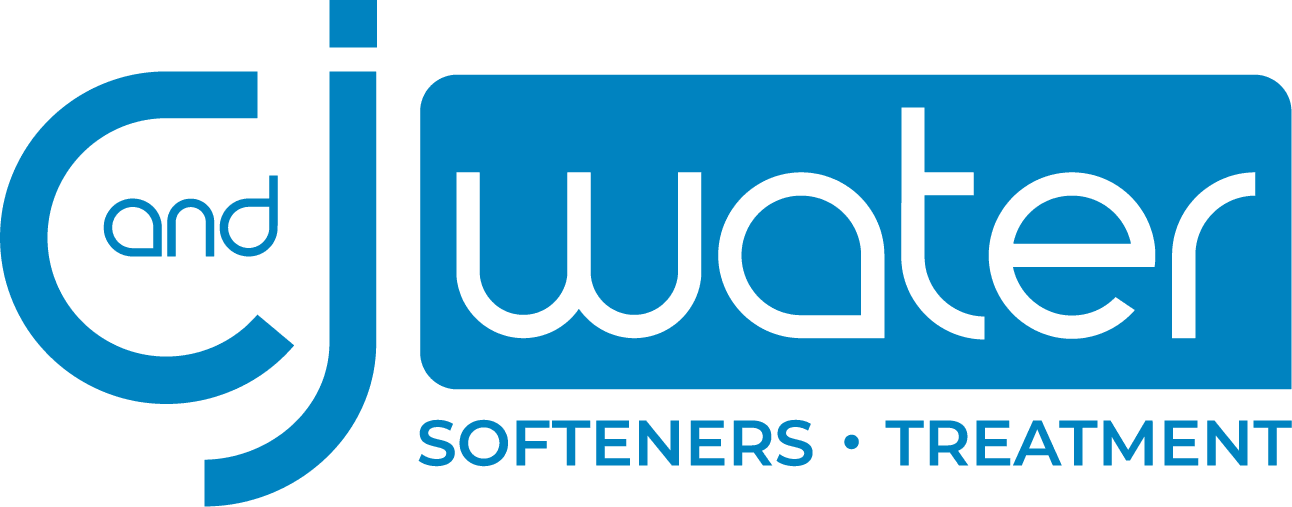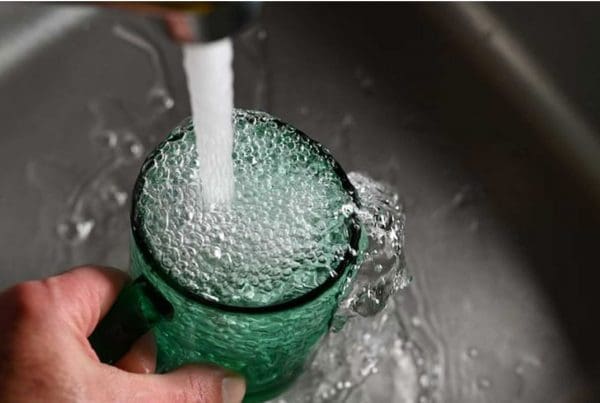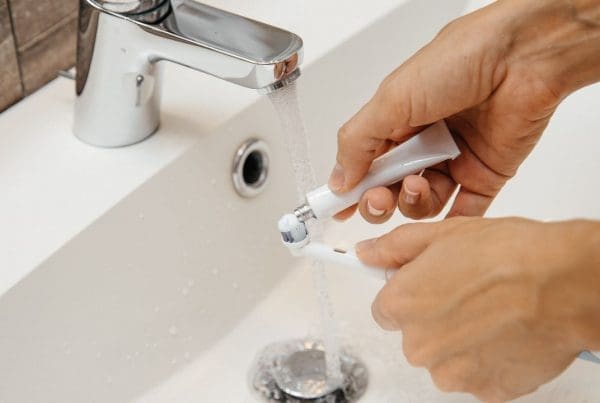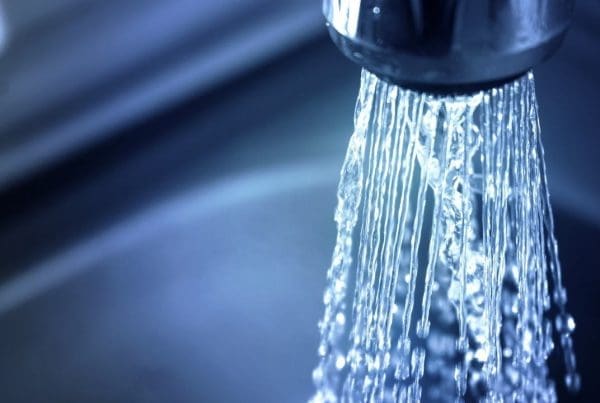Quality Water Treatment Solutions for Your Whole House
Water is the lifeline of any home. Beyond drinking it, we use it to bathe, cook, and clean things like dishes and clothes. That makes having clean, quality water all the more important. Depending on the source of the water, it can contain various degrees of harmful contaminants like chemicals, sediments, and organic matter. Even treated water sources from cities and towns might not be in the best condition. This is where a home water filter system can be handy.
Well and city water can contain a range of contaminants. Though there are a number of water filter options to treat incoming water, it may be better to use a whole-house water filtration system for clean, filtered water as soon as it enters the home plumbing system.
These systems take the water that enters your home from a single source and treat it to remove these various harmful contaminants. When buying one, you should think about the source of your water and the likely contaminants you may find. Some systems treat things like lead or iron better than others. Let’s take a look at some of the various options for whole-house treatment C and J Water has to offer.
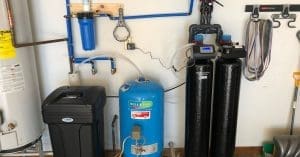
Point-of-Entry Filters for Sand, Silt, or Sediment
The first option you may want to consider is a point-of-entry filter—often called a sediment filter or whole-house filter. C and J Water typically uses a 20-25 micron, poly-spun filter to remove large particles from the water supply to protect other water treatment equipment.
A “One-Filter” is another POE option for homeowners who have more than normal sediment, silt, sand, or have contaminants that are finer than what a regular sediment filter can handle. C and J Water uses a cartridge that removes and/or reduces PFOA/PFOS, chlorine, chloramines, and other harmful contaminants in your water. Also, the filter housing is reusable once the internal cartridge has reached its useful life, therefore saving the environment from the wasted disposal of plastic housings. However, because of their higher cost, they are usually only recommended for extreme situations where the only other alternative is to drill another well.
NSF/ANSI-Standard Certification
Look for certifications from NSF International, an independent organization devoted to developing public health standards for water filtration. It rates water filters and gives them an American National Standards Institute (ANSI) certification if they meet certain minimum requirements.
The Water Quality Association (WQA) is the leading accredited agency for testing and certifying water to NSF/ANSI standards. Typical NSF/ANSI certification standards include NSF/ANSI 42, 44, 53, 55, 58, 401, 244, and 231.
NSF/ANSI 42filters have the lowest NSF/ANSI certification available. These filters remove taste- and odor-affecting contaminants, like chlorine and large sedimentary particulates.
NSF/ANSI 44filters are designed and certified to reduce the presence of barium, radium 226/228, and hard metals like calcium and magnesium.
NSF/ANSI 53filters remove harmful contaminants like lead, cryptosporidium, volatile organic compounds (VOCs), and chromium.
NSF/ANSI 55filters are made for UV filtration systems, so they are typically certified to kill or remove bacteria, viruses, fungi, and additional microorganisms that can be found in your water supply.
NSF/ANSI 58filters are made for reverse-osmosis systems. This certifies that the filtration process removes total dissolved solids (TDS), cysts, barium, copper, arsenic, lead, and more.
NSF/ANSI 401filters are certified to remove incidental contaminants and emerging compounds including prescription drugs, new types of herbicides, pesticides, flame retardants, and detergents.
NSF/ANSI 244 and 231 filters are intended to remove microbiological contaminants. They are regularly used in areas where biological contamination is a common occurrence and in remote locations for people who are backpacking or camping.
Water Softeners for Iron, Calcium, & Magnesium
While some whole-house water filters can use heavy metal cartridges to reduce the presence of calcium, magnesium, and other minerals, most products are equipped with sediment filter cartridges, or cartridges intended to filter biological or chemical contaminants. If you experience hard water in your home, then it’s advised to invest in a whole-house water filter and softener combo.
This ensures that the water is properly filtered, but that it’s also treated with salt molecules, which bind to hard metals and render them inert. Removing these minerals from hard water is integral to maintaining the durability of the pipes, faucets, and hot water tank. Users who don’t want to add salt to their whole-house filter system can get a salt-free softener that coats the hard metal particles to prevent them from sticking to the plumbing infrastructure.
Water softeners literally soften water, by removing certain minerals. In most cases, this means excess calcium and other minerals, which are naturally occurring elements often found in well water, but also present in many municipal water supplies. While these minerals aren’t necessarily bad for your health, when they build up in your plumbing they cause all sorts of household issues.
Saltwater softeners extend the life of your appliances by stopping mineral deposit buildup. They save money, using up to 50% less soap and detergents. Water softener systems keep your hair shiny and soft, keep your skin moisturized, keep your clothes brighter, and make taking showers more enjoyable. Soft-water systems are gentle on plumbing and don’t cause rust damage in sinks, tubs, dishwashers, and washing machines.
Types of Water Softeners
The most common and conventional type of water softener is the single tank water softener. It relies on a salt brine, like that saltwater you used to gargle for a sore throat when you were a kid. This system works by replacing the hard minerals (calcium, potassium, magnesium, iron, etc.) for sodium, which is softer. You won’t taste the sodium, of course, but you’ll “feel” it, in terms of better soap lather, softer skin, and cleaner dishes. Salt-based water softeners will also help extend the life of your home’s hot water heater. The single tank water softener is the ideal solution for city water applications and can also be effective for certain well water situations.
Conventional water softeners need to regenerate from time to time. This typically happens overnight when everyone at home is asleep and there is no water demand. If freshwater demand persists in your home at all hours of the day and night, you might want to consider a dual tank system. When one tank is offline regenerating, the other tank kicks in, and vice-versa. Dual-tank softeners are handy for larger families or folks who work day and night shifts. The twin tank water softener has the advantage of regenerating with soft water. This softener will give you soft water 24 hours a day and will last much longer than a single tank softener.
Reverse Osmosis for Consumption
Reverse Osmosis is a filtration system designed to remove dissolved solids, organic and inorganic forms, that a water softener cannot. RO removes metals like arsenic, aluminum, copper, lead, chromium, and many others. It also removes inorganic forms such as nitrates, phosphates, chlorides, sulfates, and more. RO works by forcing water from your home’s supply through the RO membrane. This membrane contains thousands of tiny holes, just large enough to allow water molecules to pass through. Anything bigger than a water molecule is trapped and cannot fit through the membrane.
C and J Water offers a premium 4-stage Reverse Osmosis System that is a great solution for water used for drinking and cooking. It can be hooked up to your refrigerator tap and icemaker, as well as a dedicated faucet on your countertop.
While most homeowners only need RO at the faucet and fridge, sometimes a whole house RO is required. This is usually due to brackish water coming in from the well. Because this unit is expensive and takes up a lot of space it is only recommended in extreme circumstances. You will still need to have a water softener, and maybe some other water treatment equipment if the RO makes your water too acidic.
Chlorine Removal for City Water
Over 98 percent of U.S. water supply systems that disinfect drinking water use chlorine. In the U.S. we have depended on chlorine as our drinking water disinfectant for over a century. The primary purpose of having chlorine in the water is to destroy the bacteria and viruses that can enter a water system in many different ways. A chlorine residual provides the primary protection from these known and well-understood pathogens. It is the only effective, large-scale method for the residual protection of drinking water. Although chlorine can react with organic material in water to create low-level contaminants, these are closely regulated by the EPA.

Chlorinated Water Is Not As Safe As You Think
Even though you are using municipal water, chances are you are still getting doubtful water. It is specifically true if you have obsolete pipes. That’s why homeowners switch to chlorinated water.
This type of water can undeniably sterilize most bacteria and other microbes. However, according to several studies, consuming large amounts of chlorinated water could pose a health risk. It can negatively affect your skin and hair as well.
While Reverse Osmosis will remove the chlorine from your drinking water, a dechlorinator is needed to remove it from water throughout the house. When we drink contaminated water the toxins are partially filtered out by our kidneys and digestive system, but it might come as a shock that most of our harmful exposure to chlorine is due to inhalation of steam and skin absorption while showering. A warm shower opens up the pores of the skin and allows for accelerated absorption of chlorine and other chemicals in the water.
The steam we inhale while showering can contain up to 50 times the level of chemicals than tap water due to the fact that chlorine and most other contaminants vaporize much faster and at a lower temperature than water. Inhalation is a much more harmful means of exposure since the chlorine gas (chloroform) we inhale goes directly into our bloodstream. Chlorine vapors are known to be a strong irritant to the sensitive tissue and bronchial passages inside our lungs. Chlorine in shower water also has a very negative cosmetic effect, robbing our skin and hair of moisture and elasticity.
Ultraviolet Light for Bacteria Mitigation
UV systems are an effective means of water disinfection for residential point-of-entry used to help disinfect the entire home. UV systems are highly recommended to homeowners who may suspect any e.coli, cryptosporidium, giardia, or any other types of bacteria and viruses in the water. Other means to neutralize bacteria or viruses in water would be adding chemical disinfectants. It is important to avoid drinking any water that is potentially contaminated from bacteria to protect yourself from any water-borne bacterial diseases.
As bacteria in the water passes through the UV treatment system, the ultraviolet light disrupts its DNA, eliminating the ability to reproduce. If it can’t reproduce, it can’t replicate, ensuring it can’t infect what it comes into contact with. UV light water purification systems are simple but very effective. Ultraviolet light systems also have many benefits that other purification applications don’t. They are reliable, do not waste any water, and have relatively low maintenance. Also, UV light disinfection is approved by the EPA because it is chemical-free and doesn’t create any harmful byproducts.
What Whole-House System is Best for Your Home?
While these are the most common water treatment options, some homeowners experience smelly water, brown or discolored water, tannins, or excessive iron. Rest assured, whatever your water issues are, C and J Water has multiple solutions to give you the best water quality for your family.
Contact us today for free water analysis and take control of your water!
